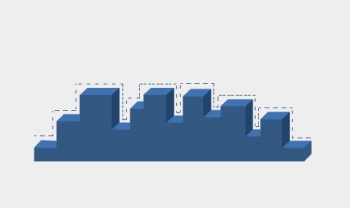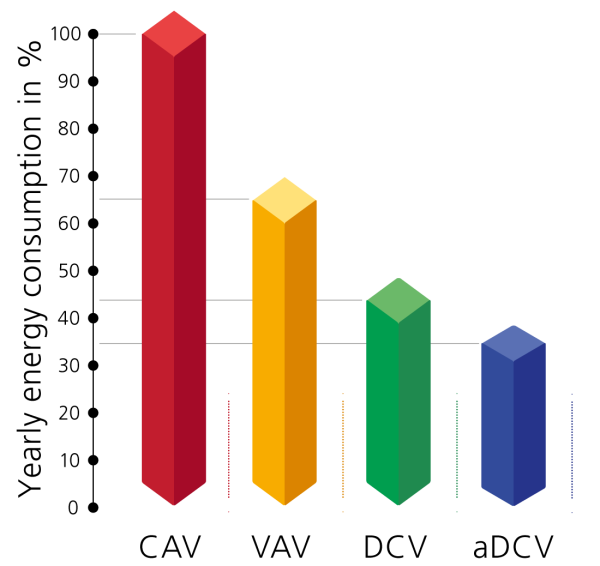Control principles

Airflow Control Principles:
By reducing the airflow when there are no people present in the building/rooms or by adapting the airflow to the load, energy is saved for heating the outdoor air while reducing the electricity consumption for operating the fans.
Demand control is the way to save energy consumption for the ventilation system
In many building types, the premises are used to varying degrees during the day. At the school, the teacher’s room is almost empty when there is teaching, while there is a lot of work in the middle of the day. Conversely, classrooms are heavily occupied during teaching and low when pupils have a break or are out in a classroom.
In the office building, a part of the staff is often either at meetings, on courses, on leave or ill. For example, there may be meeting rooms that are not used all the time, so the need for ventilation can vary a lot.
Experience and studies of schools and offices show that the average airflow required is normally only around 50–60% of the dimensioned airflow.
During operating hours, the premises are only used for approx. 60% of the time and during the periods when they are used, there is only 75% load.
This clearly confirms the need for ventilation control to avoid unnecessary energy waste.
See the different options
Comparison of control principles
The graph below shows the energy consumption for each individual control principle.
With aDCV, Adaptive Demand Controlled Pressure Regulation, the pressure in the duct, unlike other control principles, is adaptive. The airflow is regulated up and down according to the demand in the building, and if there is a need for low airflow, the pressure is reduced at the same time – which saves extra energy.
The aDCV is thus a further development of the DCV principle.





